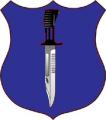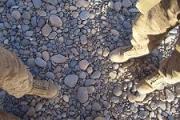The projectile must have enough penetration to be able to reach vital organs to cause them damage. At the same time, it must not have so much
penetrating capability that it passes completely through the target
without significant damage – resulting in a so-called “throughand-
through.” Energy expended outside the target is useless (incidentally,
this is why “impact energy” is a poor measure of bullet
comparison, as it does not separate energy expended in damaging
the target from energy lost beyond the target). The ideal bullet
would have enough energy to penetrate through any intervening
barrier to reach vital organs without significantly slowing, then
dump all of its energy into damaging vital organs without exiting
the body. Unfortunately, design of such a bullet is nearly impossible
in a military round, even if all human bodies were uniform
enough to allow for such a thing. A round that reaches the vital
organs of a 5-foot 6-inch 140-pound target without over-penetration
is likely to react differently against a 6-foot 2-inch 220-
pounder, even without considering target posture. To complicate
matters, when hitting a prone firing target the bullet might have
to pass through a forearm, exit, enter the shoulder, then proceed
down the trunk before striking heart or spinal cord. A flanking
hit would engage the same target through or between the ribs to
strike the same vital regions. All these possibilities are encountered
with the same ammunition. Ultimately, bullet design is a
series of tradeoffs complicated by the need to survive launch,
arrive at the target accurately, possibly penetrate armor, glass, or
other barriers, and be producible in large quantities (1+ billion
per year) at costs the military can afford.(p.5)












Bookmarks